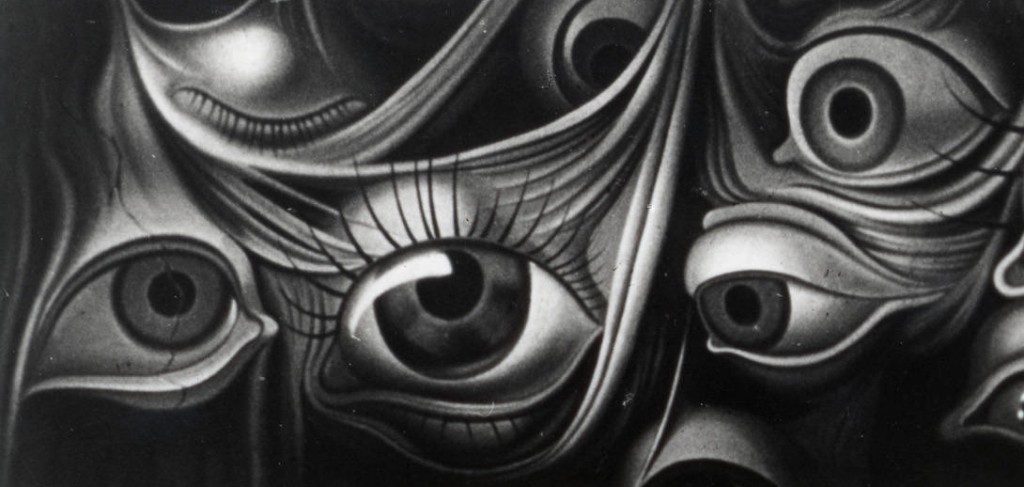While Spellbound (1945) was one of Alfred Hitchcock’s successful films, it hasn’t held up too well with time even if it did win 6 Oscar Nominations in its time. Sure, as with most Hitchcock’s films, it’s eminently watchable, especially with lead stars like Ingrid Bergman and Gregory Peck, and the film is even great fun at times, but the psychoanalysis bits appear rather silly and simplistic today. In a scene in the film, when a doctor in a mental asylum (Ingrid Bergman), is told one of her patients has slit his throat with a razor, she actually asks, “Is it serious?” That pretty much sets the tone for the film, which Hitchcock himself admitted was little more than “another manhunt story wrapped up in pseudo-psychoanalysis”.
What does hold up pretty well in the film though, is a key dream sequence, at least what remains of it, that holds the key to Gregory Peck’s amnesia. While Hitchcock thought it would be a great idea to use Surrealist Salvador Dali to design the dream sequence, producer David O Selznick was initially not too sure. Hitchcock wanted a sharpness and clarity in the sequence he thought Dali would be able to bring due to the architectural sharpness in is work, as against the stereotyping of dream sequences in films as blurs. Selznick finally relented, realizing the solid publicity the film would get in the coming together of two great talents such as Hitchcock and Dali.
Hitchcock pretty much gave Dali a free rein but things spiraled out of control as there were certain things that Dali wanted to do, which according to Hitchcock were just not possible. In his interview with fellow filmmaker Francois Truffaut, Hitchcock recalled, “Dali had strange ideas; he wanted a statue to crack like a shell falling apart, with ants crawling all over it, and underneath, there would be Ingrid Bergman covered by the ants!” Hitchcock said he also wanted to shoot the dream scenes in the open air so that, “the whole thing, photographed in real sunshine, would be terribly sharp. I was very keen on that idea, but the producers were concerned about the expense. So we shot the dream in the studios.”
Selznick also brought in legendary Production Designer Willaim Cameron Menzies (Gone With The Wind) to oversee the sequence and maintain some semblance of control. However, unhappy with the final result, Menzies disassociated himself from the film and had his credit removed from Spellbound’s titles.
Though the footage was about 20 minutes in length (according to Ingrid Bergman), unfortunately, only this small fraction remained in the final film as Selznick and the censors took care of the rest. As one looks at the sequence today, one can only think wistfully about Hitchcock’s and Dali’s original vision and wonder what might have been…


